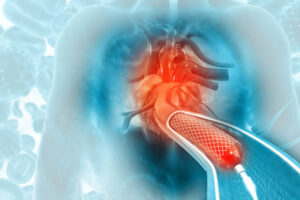Angioplasty is a Medical Procedure
 Angioplasty is a medical procedure used to open blocked or narrowed arteries. It involves inserting a catheter with a balloon attached into an artery and then inflating the balloon to widen the passage. The most common form of angioplasty is known as percutaneous coronary intervention (PCI). This type of angioplasty is used to treat coronary artery disease, which occurs when the arteries that supply oxygen–rich blood to the heart become narrowed or blocked by fatty deposits called plaque.
Angioplasty is a medical procedure used to open blocked or narrowed arteries. It involves inserting a catheter with a balloon attached into an artery and then inflating the balloon to widen the passage. The most common form of angioplasty is known as percutaneous coronary intervention (PCI). This type of angioplasty is used to treat coronary artery disease, which occurs when the arteries that supply oxygen–rich blood to the heart become narrowed or blocked by fatty deposits called plaque.
If these deposits build up, they can reduce blood flow to the heart, leading to chest pain (angina) and, in some cases, heart attack. PCI can restore normal blood flow by widening or unblocking these arteries. Other forms of angioplasty include carotid angioplasty for narrowing in neck vessels that supply blood to the brain; renal artery stenting for narrowing in vessels supplying blood to the kidneys; and peripheral vascular angioplasty for narrowing in vessels located outside of those associated with your heart and brain.
During an Angioplasty Procedure
The doctor will first use imaging tests such as X–rays or ultrasound scans to identify any narrowed areas in your arteries. They will then insert a long thin tube called a catheter into an artery on your arm or leg near where it meets your body surface (known as percutaneous access). The end of this tube contains either a balloon or metal mesh device called an expandable stent which will be guided through your bloodstream until it reaches the affected area(s).
Once it’s reached its destination, they will inflate the balloon inside it – this pushes against any fat blocking up that area – while at same time expanding any metal mesh stents which hold open passageways within that area so oxygen rich blood can flow freely through them again. Angioplasties are usually done under local anesthesia and typically last around 45 minutes depending on how many areas need treatment during one procedure session. Afterward you may experience some bruising at puncture site where catheter was inserted but should be able recover relatively quickly from any discomfort experienced during procedure itself due its short duration period overall compared other invasive treatments available today like surgery etc…
Summing it Up
Overall Angioplasty is minimally invasive treatment option available anyone suffering from arterial blockages caused by buildup plaque etc…and can help restore normal circulation back individual’s affected regions without having undergo major surgery thus making recovery process much simpler easier than ever before!
Contact Milner Vein & Vascular for a consultation or for more information.
